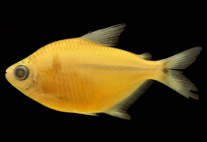Abstract
The trematode genus Tellervotrema Gibson & Bray, 1982 was erected for Podocotyle-like species that parasitize archybenthal macrourid fishes (also known as grenadiers or rattails) and that possess no vitelline follicles dorsal to the ceca but do have a symmetrical pair of isolated groups of vitelline follicles in the posterior forebody. Tellervotrema katadara (Kuramochi, 2001) Kuramochi, 2009 is resurrected as a valid species based on an examination and re-description of holotype and paratype specimens collected from the intestine of the bathygadine macrourid Gadomus colletti Jordan & Gilbert from 518–582 m depth in Tosa Bay, off the Pacific coast of southern Japan. Tellervotrema beringi (Mamaev, 1965) Gibson & Bray, 1982 is re-described from specimens originally identified as T. katadara, collected from the intestine of the longfin grenadier, Coryphaenoides longifilis Günther, and found at 1,196 m depth off the Pacific coast of the Tōhoku region, northern Honshu, Japan. New host and locality records for T. beringi are presented along with a brief listing of museums housing type and voucher specimens of the three species now recognized in Tellervotrema. A comprehensive listing is given of all parasites reported from the two macrourid species relevant to this study and a key is presented for members of Tellervotrema. Finally, we hypothesize that the life cycles for T. beringi and T. katadara in the deep waters of the North Pacific Ocean off Japan most likely include a gastropod as a first intermediate host, one or more of a variety of invertebrates (amphipods, decapods, mysids) and/or finfish as second intermediate hosts, and the grenadiers, C. longifilis and G. colletti, as definitive hosts, respectively.

